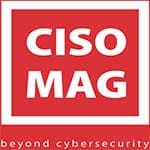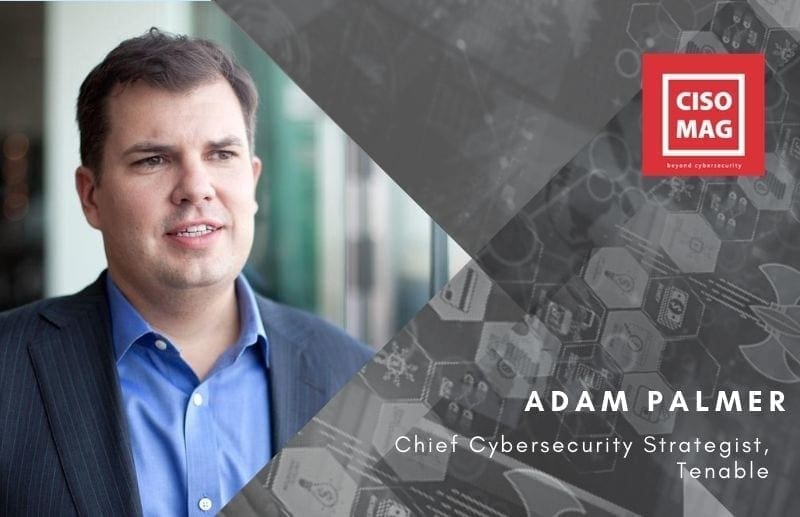Palmer has over 20 years of cybersecurity experience. That includes executive positions at large cybersecurity vendors, leading the U.N. Global Program against cybercrime. Before joining Tenable, Palmer held the position of Global Director, cybersecurity Risk & Controls for Banco Santander – the largest bank in the EU and Latin America.
Palmer began his career as a U.S. military officer focused on cybercrime cases. After the military, he worked in a senior operational role by creating the [.]ORG top-level Internet domain cybersecurity program.
Edited excerpts of the interview:
By Brian Pereira, Principal Editor, CISO MAG
Your research shows that only 4 in 10 security leaders know how secure or at risk they are. How does an organization quantify business risk due to these business-impacting cyber attacks? Are there any frameworks or tools to do this?
I worked on this idea for two years and my prior job at the bank (Banco Santander) was trying to quantify risk — moving from qualitative to quantifiable analysis. Many security leaders use the heat matrices, the red, amber, green (RAG) scores to try to describe risk to the business leaders. This is really IT talk. Every organization I worked at did this. It doesn’t say anything to really quantify the risk or help people understand the reduction in risk. How can a business leader make a decision based on a color in RAG scores? There is a gap in communication between how IT people speak (technical or ambiguous), and the expectations of business leaders — quantitative understanding of risk.
A cyber exposure score, which is what Tenable creates, is a powerful tool because it gives you a quantifiable number.
Why haven’t security leaders been able to do accurate risk assessments for business-impacting cyberattacks?
The heart of it is really the lack of partnership between the security and the business leaders. There’s not enough alignment of metrics and objectives with business strategic priorities. I see that organizations report risk in a very qualitative language. This is not the language of business leaders. They have to consider industry benchmarking frameworks and accurately report it to the business, especially in times like today.
Organizations with security and business leaders who are aligned in measuring and managing cybersecurity as a strategic business risk deliver demonstrable results. What would be your recommendations to security leaders to do this security-business alignment? How do they weave cybersecurity into the fabric of business discussions?
The keys are a few things: linking the security program to business performance. Making sure you have visibility across the entire attack surface. The attack surface has expanded with cloud and even operational technology. You can’t protect what you can’t see. And you have to apply a business context to your tactical decisions and express that in a quantifiable matrix that business leaders understand.
Looking at the global threat landscape, which countries are being targeted the most? And what could be the reasons?
We saw that all the markets had a high percentage of business-impacting events over the last 12 months. 97% of businesses in India reported a cyberattack within the last 12 months. And 74% expect an increase in cyberattacks. Today, we are in a very dynamic business environment, with business and technology closely woven together. The effective business-aligned CISO just can’t focus on technical issues or one part of that threat landscape. They really have to be aligned with the business and elevate themselves as a business-aligned security expert — and be aware of the entire expanded threat landscape.
Specific to India, what does your research show, with respect to the types of businesses being increasingly targeted?
We saw medium and large businesses being attacked. We know that these businesses make India a dynamic and exciting economy, with Digital India, and all the technology being used throughout India – in business and in government. Cybercriminals know where the money is, and they target technology and intellectual property. Given the monetary value and the damage that can be caused by a successful attack, across industries, telecom, health care, finance, all these industries are major targets. And what we found in this study is that all of these are equal opportunity targets for cybercriminals to attack a business.
Your research shows that 67% of security leaders in India say these attacks also involved an operational technology (OT) system. What kind of industries are being targeted within India? Does this also include critical infrastructures like nuclear plants and electricity grids?
This is really an issue of convergence. Automation is now common in the industrial environment. And that environment is converging with the IT environment. It is in critical infrastructure and manufacturing. But it can be in lots of different types of businesses. Think about automated access controls, with all kinds of smart connected devices, HVAC — some of these use smart connected industrial controllers. And we are finding that cybercriminals are attacking these devices and often, security teams aren’t monitoring these satisfactorily. They are using legacy approaches for vulnerability risk management, and they are not detecting these devices. And the criminals are attacking them..[…] Read more »…..
This article first appeared in CISO MAG.
<Link to CISO MAG site: www.cisomag.com>




ROLE DESCRIPTION
We are looking for a Membership Manager to join the company and take on one of the most opportunistic roles the industry has to offer. This is a role that allows for you to create and develop relationships with leading solution providers in the enterprise technology space. Through extensive research and conversation you will learn the goals and priorities of IT & IT Security Executives and collaborate with companies that have the solutions they are looking for. This role requires professionalism, drive, desire to learn, enthusiasm, energy and positivity.
Role Requirements:
Role Responsibilities:
Apex offers our team:
Entry level salary with competitive Commission & Bonus opportunities
Apex offers the ability to make a strong impact on our products and growing portfolio.
Three months of hands on training and commitment to teach you the industry and develop invaluable sales and relationship skills.
Opportunity to grow into leadership role and build a team
Extra vacation day for your birthday when it falls on a weekday
All major American holidays off
10 paid vacation days after training period
5 paid sick days
Apply Now >>